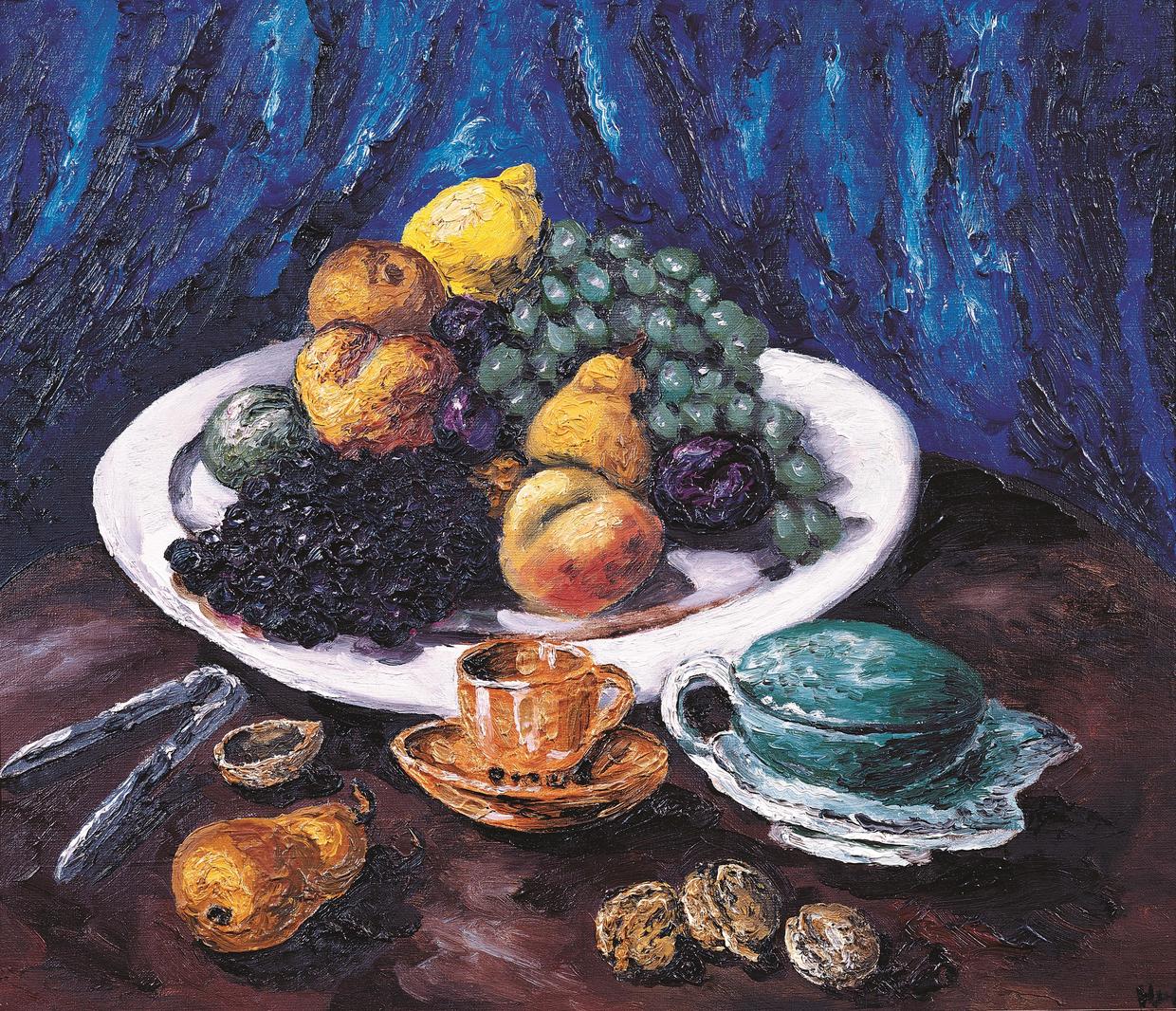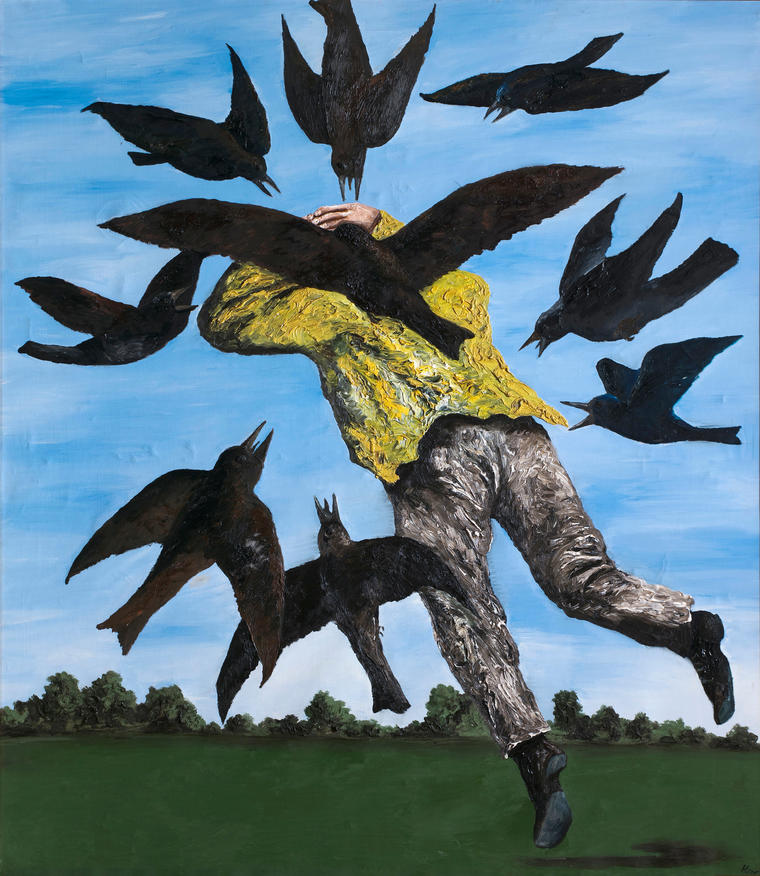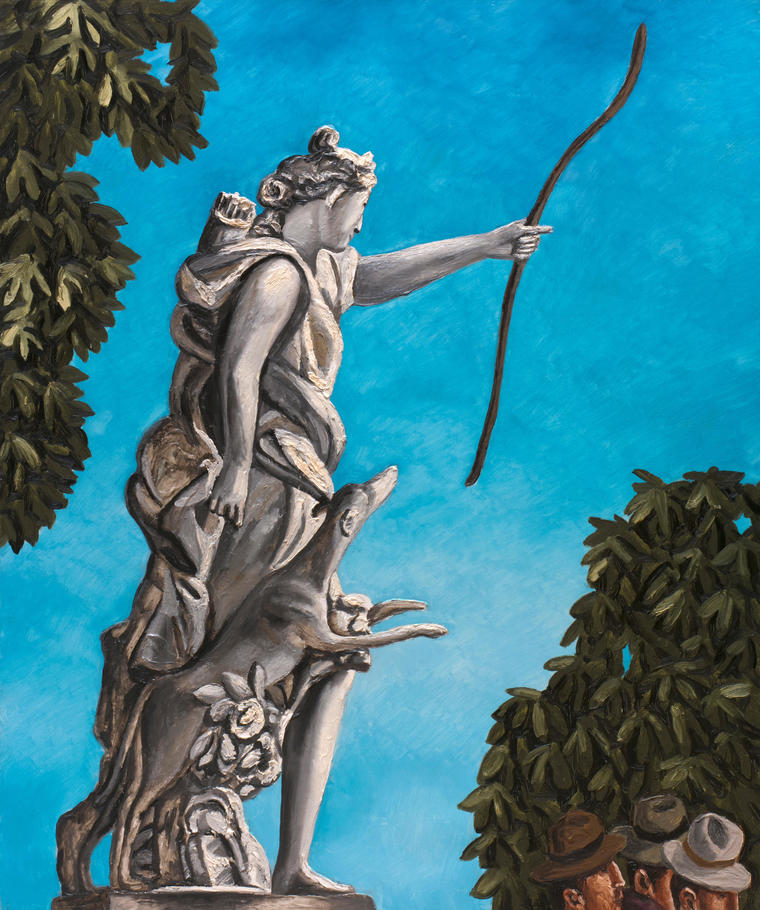
«I like to depict all kinds of food. All the artists wrote feasts and holidays. People spend a lot of time at the table: they eat, drink, read or play», – Nesterova says. This is what usually the characters of her paintings are occupied with, and her picturesque compositions with still lifes are almost always marked by the presence of a person. But the «Still life with a butter dish», created in 1998, – is a unique one. This is one of the few absolutely independent images of the «dead nature» in the artist's work. The central place in the picture is allocated to a large white dish, on which various fruits are laid – peaches and grapes, plums and pears. There are three walnuts In the foreground of the canvas. Traditionally, according to the allegorical language of the classic still lifes of the 17th century, a whole nut symbolized the soul, bound by the shell of the body, while the empty nut shell is its release. It is possible that each thing presented on this table – the oilcan, the coffee cup, the nuts tongs, – has attaches a certain symbolic significance implied by the artist, as was characteristic of the works of the old masters. The objects depicted here, for example, the ocher-colored coffee cups and saucers, are also found in other still-lifes by Nesterova in the 90's. The forms and volumes of objects are molded with juicy pastos smears, and the sonorous and rich coloring of the picture recalls the works of the «Russian sezannists» – Ilya Mashkov and Petr Konchalovsky. This is the deep blue color of the drapery in the background, contrasting with the bright yellow color of the lemon, and the dark violet, turning almost black, the shade of a plum in the frame of olive-green grapes. Nesterov herself is often considered to be among Cezanne's followers, who, for all her sincere love for the French post-impressionist, denies his influence on her own work: «He's a mathematician in painting, and I'm more emotional, I'm rushing to work».V





